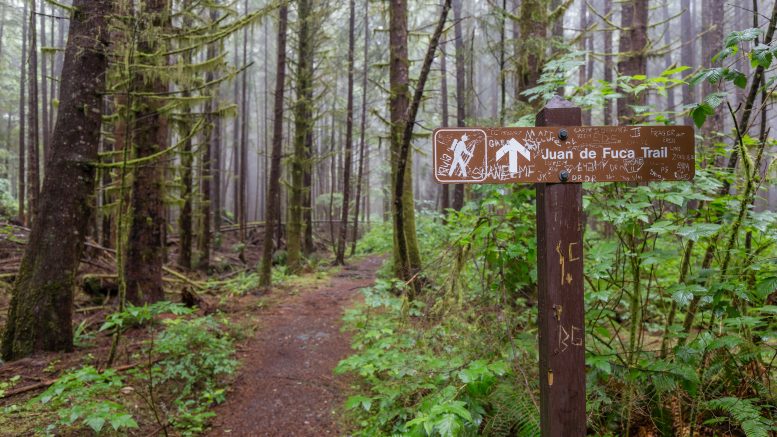More visitors mean more danger to wildlife

Photo by Micheal via Hikingisgood.com.
I moved to the Island in 2012 when I was 14. Growing up in a competitive rock climbing household, my family and I basically lived outside. But being from a small town in Ontario, our options for outdoor adventures were limited. In late 2011, my mom and step dad sold our rock climbing gym, packed up our house, and moved to Sooke, B.C. I followed soon after.
The rest of my high school years were spent going on hikes or to beaches almost every weekend. My parents made it a mission to explore what this island has to offer and make up for the years they spent in Ontario.
Throughout our adventures, these parks always seemed so isolated. But now, a decade later, this is no longer the case. Social media has made our parks more popular, but this has me concerned for our wildlife.
This year, BC Ferries carried more than 5.8 million passengers in a three-month period leading up to June 30, 2023. This was an increase of seven per cent from the previous year. In their most recent fiscal year, BC Ferries also saw the highest volume of vehicle traffic in 63 years. With 9.4 million vehicles travelling by ferry, the company beat its 2019 record of 8.9 million. Though the previous record of 22.3 million total passengers hasn’t yet been surpassed, at this rate, it doesn’t seem far off.
On top of this, tourist spending jumped up to 45 per cent in 2022, reaching $74.4 billion. But this was still less than it was in 2019, when it was around $95 billion.
Recently, Victoria was awarded one of the top three spots in the Condé Nast Traveller magazine Readers Choice Awards. This magazine reaches more than 20 million readers every month and 40 million people on its social media platforms. Victoria was awarded a spot next to San Sebastián in Spain and Singapore, beating out popular European cities like Copenhagen.
Condé Nast says that this city “embraces adventure” and “draws outdoorsy types.” Since the award was released, other popular publications such as Vogue have released their own articles about things to do in our small city.
While the city’s tourism is starting to rise, so are the visitations in parks in the Capital Regional District. From January to April of 2021, our regional parks recorded over 2.7 million visits, which was a 20 per cent increase from the previous year. Also in 2020, the parks saw a 13 per cent increase from the previous year, from 7.5 million visits to 8.5 million.
This is not a situation unique to Victoria; other popular parks around Canada have become increasingly overcrowded. In Banff National Park last year, park officials had to turn away around 5 000 vehicles a day, and the park sees around 4 million people annually. In August, Parks Canada told CBC that they were on track for the busiest season on record. To combat the increase in traffic, Parks Canada has blocked off Moraine Lake Road to personal vehicles, making a shuttle bus the only way to get to the park.
Banff is not the only park to see an influx of visitors. In B.C., Joffre Lake has grown to one of the most popular provincial lakes thanks to social media. In 2019, Joffre Lake drew around 196 000 visitors, a 222 per cent increase from 2010. The park has now introduced day passes, which are meant to prevent overcrowding.
With this increase of visitors there has also been a rise of activities that have a negative impact on the environment. Kukwpi Skalúlmecw First Nations chief, Dean Nelson, told CBC that the crowds fill the Joffre Lake parking lots and leave litter behind. He also said that this limits members of Lil’wat Nation from spending time on their land. With this both Líl̓wat Nation and N’Quatqua First Nation decided to temporarily close the park earlier this year, to harvest and gather on their land.
Similarly in Banff, its increase of visitors coincided with a rise in littering, walking off trails, people getting too close to animals. In 2020 two wolves in Banff had to be euthanized. One of them was because it got so used to human connection to food that it was unable to fend for itself.
Now that Vogue has written articles about Victoria, and BC Ferries is setting historical records, it doesn’t seem too far off that our island will be the next travel hotspot. While there is no evidence to claim that tourism is affecting the wildlife on the Island yet, if Victoria’s tourism increases, who’s to say that the overtourism that affects other national parks won’t happen here?
The Island is full of amazing, yet dangerous wildlife and a beautiful ecosystem. These parks are part of what makes living on the Island so rewarding. While I believe people should go and explore what this island has to offer, it still leaves me concerned for the future of our parks.








